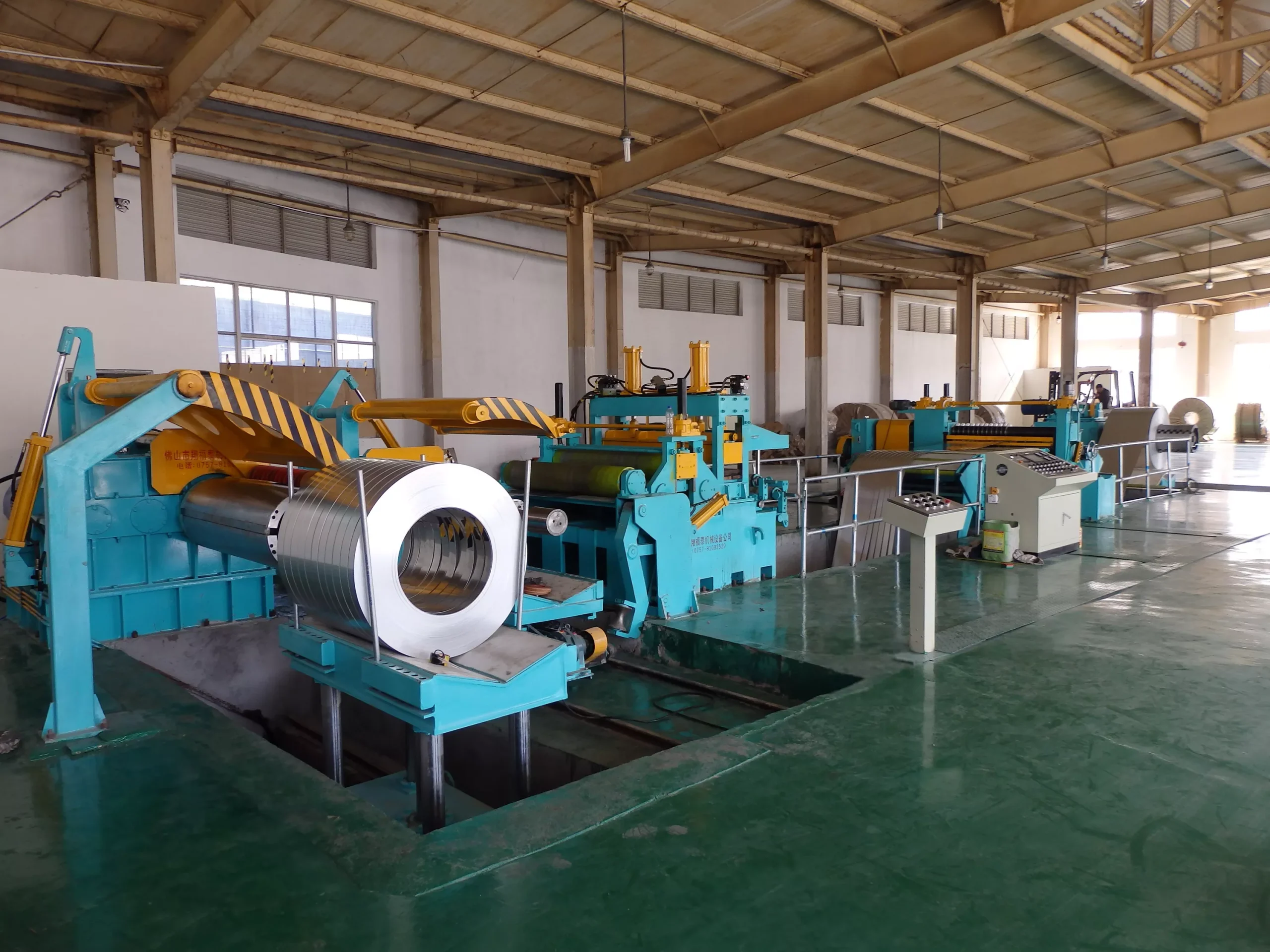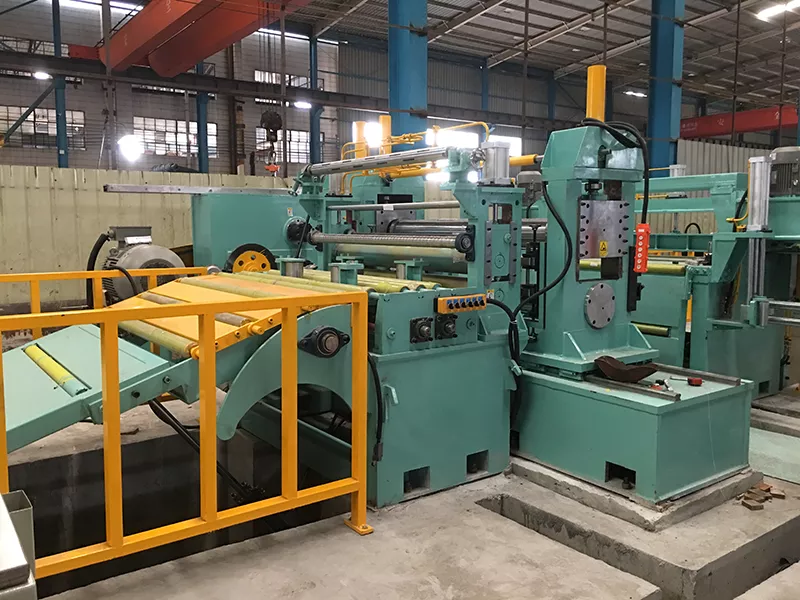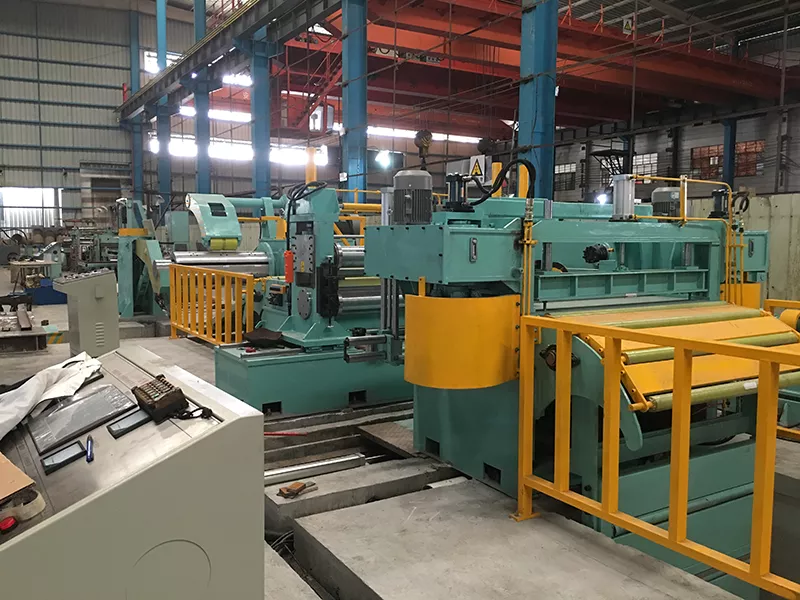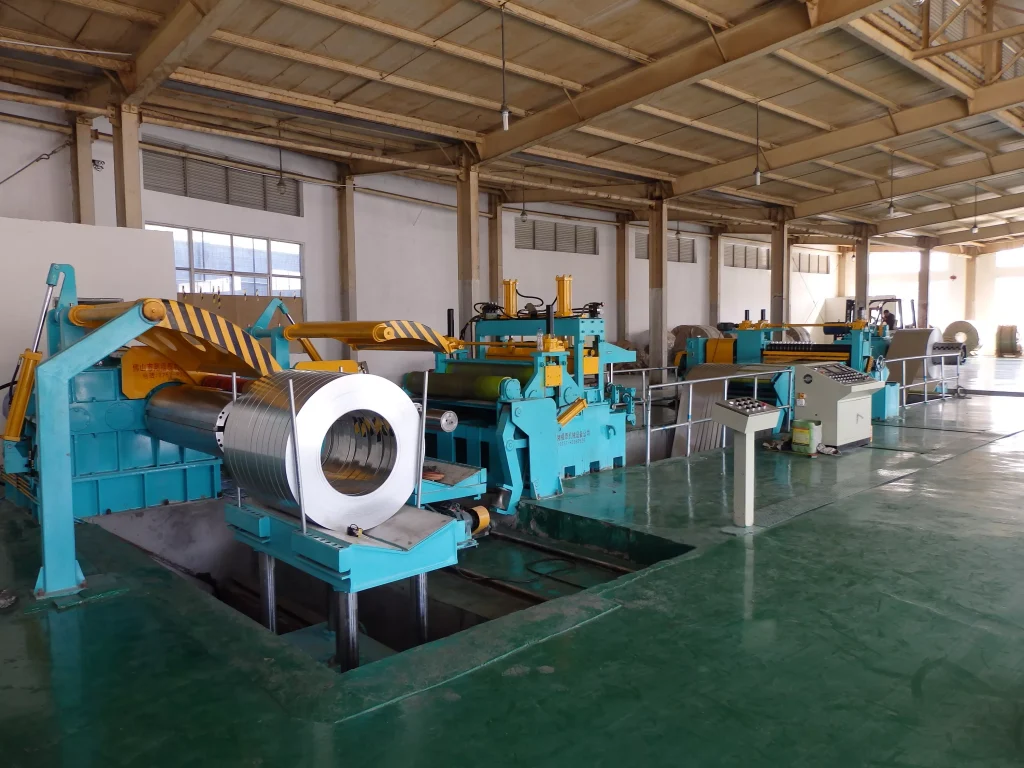How to Prevent Common Steel Slitting Line Problems?
Running a steel slitting line well improves product quality and speed. Problems like crooked cuts or messy winding can waste time and harm materials. You can stop these problems by doing regular checks and fixes. Fixing small issues early keeps machines working and avoids expensive delays. Taking care of equipment also makes it last longer and work better.
Tip: Make a plan to check and replace parts regularly.
Key Takeaways
· Regular checks help avoid expensive repairs and make machines last longer.
· Sharpen blades often and replace them quickly for neat, accurate cuts.
· Watch tension levels carefully to keep materials moving smoothly and avoid flaws.
· Clean machines every day to stop dust from causing problems.
· Keep a log of repairs and checks to stay organized with maintenance.
Slitting Accuracy in Steel Slitting Lines
Causes of Inaccurate Slitting
Bad slitting can slow work and waste materials. Many things cause this problem. One reason is unstable tension during cutting. If the tension changes, the material moves and cuts become uneven. Another cause is worn-out blades. Dull or broken blades can’t make clean cuts. Misaligned systems also cause mistakes. If the edge guide isn’t set right, the material won’t line up properly.
The environment can also affect cutting. Too much dust or dirt on the machine can cause problems. Skipping regular maintenance makes these issues worse. Finding these problems early helps you fix them and keep your steel slitting line running smoothly.
Tips to Improve Slitting Precision
You can make slitting better by following simple steps. First, check the tension controller often. Steady tension keeps the material in place while cutting. Change dull blades quickly. Sharp blades are needed for clean cuts. Adjust the edge guide often to keep the material lined up.
Clean your machine every day. Remove dust and dirt to avoid problems. Oil important parts like rails and bearings to keep them moving easily. Watch how the machine works to catch problems early.
Tip: Write down when you change blades or adjust settings. This helps you stay on track and keep the machine working well.
By doing these steps, you can cut more accurately and waste less material.

Steel Slitting Line
Material Defects in Steel Slitting Lines
Common Material Defects
Material problems can hurt the quality of your product. Scratches, dents, and wrinkles are frequent issues. These happen during cutting or rewinding. Uneven tension, bad roller alignment, or broken tools cause these flaws. For instance, unbalanced rollers can make the material wrinkle or shift.
Studies show surface flaws in hot-rolled steel affect quality. Smart methods, like special thresholds and data analysis, find these flaws early. Good algorithms spot defects during hot rolling for better control. Knowing these problems helps you stop them from happening.
How to Prevent Material Damage
Stopping material damage starts with setting up machines right. Check roller alignment often. Balanced rollers prevent wrinkles and shifting. Watch tension closely during the process. Uneven tension can scratch or dent the material.
Clean your machine every day. Dust and dirt can mess up cutting and cause flaws. Oil moving parts like bearings and rails for smooth operation. Regular checks help you find worn-out parts before they break.
Using automated inspection tools can improve quality. These tools use smart systems to find surface flaws fast. Early fixes stop problems from ruining the product. Follow these steps to reduce defects and keep quality high.
Tip: Write down inspections and repairs in a log. This keeps you organized and ensures your machine works well.
Uneven Winding in Steel Slitting Lines
Causes of Uneven Winding
Uneven winding can mess up your work and product quality. This often happens because of bad tension control. If the tension changes, the material winds with loose or tight spots. Rollers that are not straight also cause this issue. Misaligned rollers make the material shift, creating uneven layers.
Another reason is damaged or old winding shafts. These shafts can’t hold the material tightly, causing bad winding patterns. Dust and dirt on the machine can also cause trouble. Skipping cleaning lets dirt build up, which affects how the machine works.
Watching these problems helps you find what’s wrong and fix it.
Solutions for Consistent Winding
You can fix uneven winding with simple steps. First, check the tension controller often. Steady tension helps the material wind evenly. Make sure the rollers are straight. Straight rollers stop the material from moving during winding.
Change old winding shafts quickly. New shafts hold the material better for even winding. Clean the machine every day to remove dust and dirt. A clean machine works better and avoids winding mistakes.
Using automated tension systems can help too. These systems keep the tension steady and reduce errors. Regular maintenance checks find problems early and keep your machine running well.
Tip: Write down all checks and repairs in a log. This keeps you organized and ensures better winding results.

Slitting Machine
Excessive Noise in Steel Slitting Lines
Common Sources of Noise
Too much noise can disturb work and show machine problems. Worn-out bearings are a common cause. Bearings without enough oil make grinding or squealing sounds. Loose drive belts also make noise. Slipping or shaking belts create humming or slapping sounds.
Loose parts often rattle. Bolts or screws can loosen from constant shaking. Misaligned rollers also make noise. When rollers are not straight, they rub and squeak. Dust and dirt on moving parts make these noises worse.
Finding these issues early helps fix them before they grow.
Noise Reduction Techniques
To reduce noise, start with regular machine care. Check bearings often and add oil to stop wear. Replace broken bearings quickly to avoid grinding sounds. Tighten loose belts and adjust them to stop humming.
Inspect all fasteners regularly. Tighten bolts and screws to stop rattling. Align rollers properly to reduce squeaking and rubbing. Clean the machine daily to remove dust and dirt for smoother operation.
Use materials that absorb vibrations to lower noise. Add rubber pads under the machine to reduce shaking. These pads help keep noise from spreading. Watch the machine while it runs to catch strange sounds early and fix them.
Tip: Write down checks and repairs in a log. This helps keep the machine quiet and well-maintained.
Machine Stoppages in Steel Slitting Lines
Reasons for Unexpected Stoppages
Sudden stoppages in steel slitting lines slow production and waste time. These problems often come from mechanical, electrical, or user mistakes.
Mechanical issues are a common reason. Worn-out parts like bearings or belts can break quickly. Loose or crooked parts may stop the machine from working. Dust and dirt can clog parts, causing jams or slowing the machine.
Electrical problems also cause stoppages. Power surges or bad wiring can shut down the machine. Broken sensors or control systems might send wrong signals, stopping operations.
Mistakes by workers can also lead to stoppages. Wrong settings or loading materials incorrectly can damage the machine. Overloading or using broken materials can make the machine break down.
Note: Regular checks can find these problems early and prevent stoppages.
Preventative Maintenance Tips
Taking care of your machine helps avoid sudden stoppages. A good maintenance plan keeps the machine running well and saves time.
1. Daily Checks:
o Clean the machine to remove dirt and dust.
o Look at moving parts for damage or wear.
o Check the tension controller to make sure it works right.
2. Weekly Maintenance:
o Add oil to important parts like bearings and rails.
o Tighten loose screws and bolts to keep parts straight.
o Test sensors and controls to make sure they work correctly.
3. Monthly Inspections:
o Check wires for damage or wear.
o Replace old belts and other worn-out parts.
o Test emergency brakes to make sure they work safely.
4. Operational Best Practices:
o Train workers to load materials correctly and set the machine properly.
o Don’t overload the machine to avoid breaking parts.
o Use good-quality materials to stop damage during cutting.
Tip: Write down all checks and repairs in a log. This helps you stay organized and keeps the machine working well.
By following these tips, you can avoid stoppages and make your steel slitting line work better.
Reduced Accuracy in Steel Slitting Lines
Factors Leading to Reduced Accuracy
Steel slitting lines can lose accuracy for many reasons. Old blades often make messy cuts. Blades that are not sharp can’t cut cleanly. Misaligned edge guides also cause problems. If guides don’t hold the material steady, cuts will shift.
Changing tension during cutting is another issue. Unsteady tension makes the material move unevenly, causing bad results. Dust and dirt on the machine can also hurt accuracy. Dirty rollers and parts don’t work as well and make mistakes.
Skipping regular care makes these problems worse. Finding these issues early helps keep cuts accurate and avoids big mistakes.
Calibration and Adjustment Tips
Fixing accuracy starts with checking and adjusting the machine. Look at the edge guides first. Adjust them to keep the material straight while cutting. Check the tension controller often. Steady tension stops uneven cuts.
Change dull blades right away. Sharp blades are needed for clean cuts. Clean the machine every day to remove dust and dirt. Focus on rollers and moving parts because dirt slows them down.
Use tools to check alignment and tension settings. These tools help you adjust the machine for better cutting. Write down all checks and fixes in a log. Keeping track helps you stay on top of maintenance.
Tip: Teach workers to spot signs of bad accuracy. Fixing small problems early stops bigger ones later.
By following these tips, you can keep cuts accurate and improve your steel slitting line’s performance.

Coil Slitting Line
Hydraulic System Maintenance in Steel Slitting Lines
Common Hydraulic Problems
Hydraulic systems are important for running steel slitting lines well. But, they can have common problems. Leaks happen often. Fluid leaks when seals or hoses are damaged. This makes the system less efficient. Overheating is another issue. Hot fluid loses its ability to lubricate and can harm parts. Dirty fluid also causes trouble. Dirt or debris can block valves and lower performance.
Pressure loss is another problem. Worn-out parts or bad pumps can reduce pressure. This slows down the machine. Ignoring these issues can lead to expensive repairs and delays.
Maintenance Tips for Hydraulic Systems
Regular care stops hydraulic problems and keeps machines working well. Check for leaks daily. Look at hoses, seals, and connections. Replace broken parts quickly to avoid bigger problems. Watch the fluid level and keep it clean. Change the fluid as the manufacturer suggests to stop dirt buildup.
Keep the system cool. Make sure fans or heat exchangers work properly. Clean them to help the system stay cool. Test the pressure often. Use a gauge to find drops and fix them fast.
Predictive maintenance helps machines last longer. Studies show it cuts downtime by 30-50% and extends machine life by 20-40%. Fewer breakdowns mean better productivity. Follow these steps to keep your hydraulic system in great shape.
Tip: Write down checks, repairs, and fluid changes in a log. This helps you stay organized and spot problems early.
Fixing common problems in steel slitting lines early keeps them running well. Regular care and checks stop expensive repairs and delays. Experts can help with tough problems to improve machine performance.
· Why proactive maintenance helps:
o Spot problems early to avoid sudden breakdowns.
o Make machines last longer by reducing wear and tear.
o Use smart tools to predict fixes and cut downtime.
Following a maintenance plan makes your machines dependable and efficient. Begin now to boost productivity and avoid interruptions!
FAQ
How can you take care of steel slitting line blades?
Clean blades every day to remove dirt and debris. Sharpen or replace dull blades quickly for smooth cuts. Use good-quality lubricants to reduce wear and tear. Keep a record of blade changes to track usage and avoid surprises.
Tip: Check blades weekly to spot wear early.
How often should the tension controller be checked?
Check the tension controller daily to keep material flow steady. Unsteady tension can cause bad cuts and winding problems. Regular checks help find issues early and keep things accurate.
Note: A steady tension controller improves cutting and product quality.
Does automation help steel slitting lines work better?
Yes, automation makes work more accurate and reduces mistakes. Automated tension systems and inspection tools give consistent results. These systems save time by needing less manual work and improve efficiency.
Emoji Insight: Automation = Faster and Better Results!
What should you do if the machine is too noisy?
Check bearings, belts, and screws right away. Add oil to bearings and tighten loose parts. Clean the machine to remove dirt causing friction. Replace old parts to stop further damage.
Tip: Listen for strange sounds to catch problems early.
Why is keeping a maintenance log important?
A maintenance log helps track repairs, part changes, and checks. It ensures no important tasks are missed. Logs also show repeated problems so you can fix the main cause.
Emoji Reminder: Logs keep you organized and ready!


